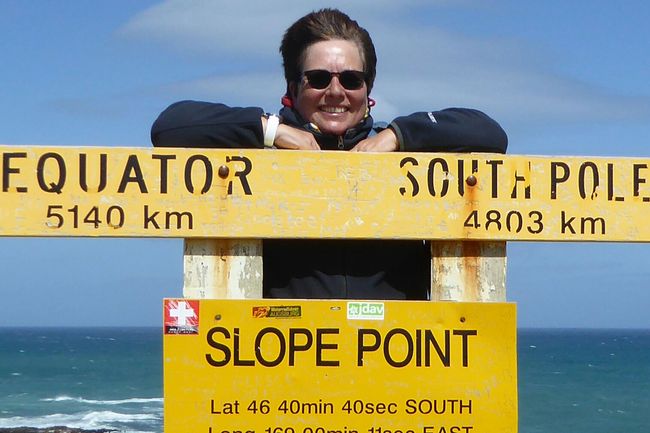
Neuseeland: 8000km solo durch das schönste Ende der Welt
vakantio.de/8000km_durch_neuseeland
Day 5 - Kauris, Kauris, Kauris
Uñt’ayata: 07.08.2019
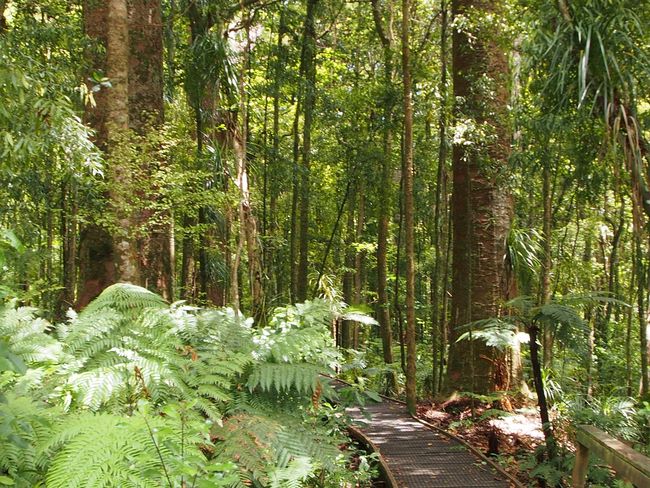
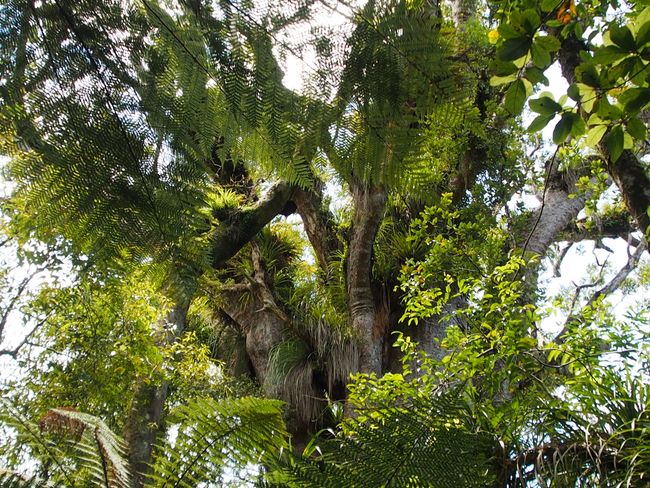
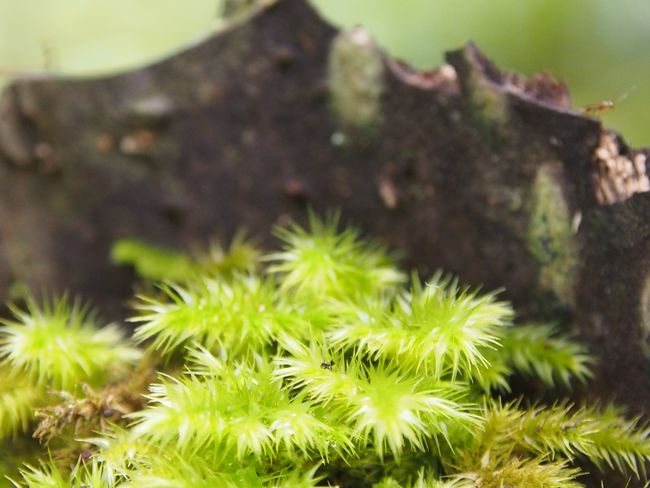
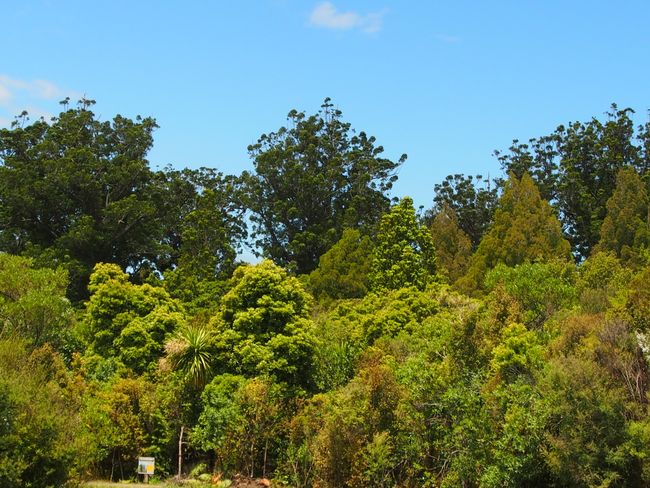
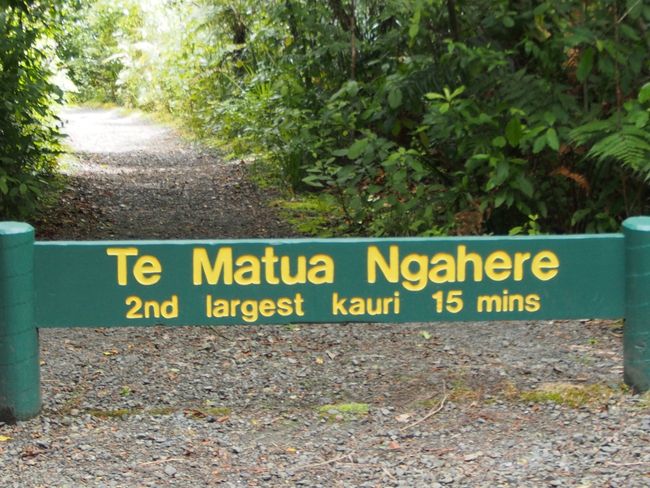
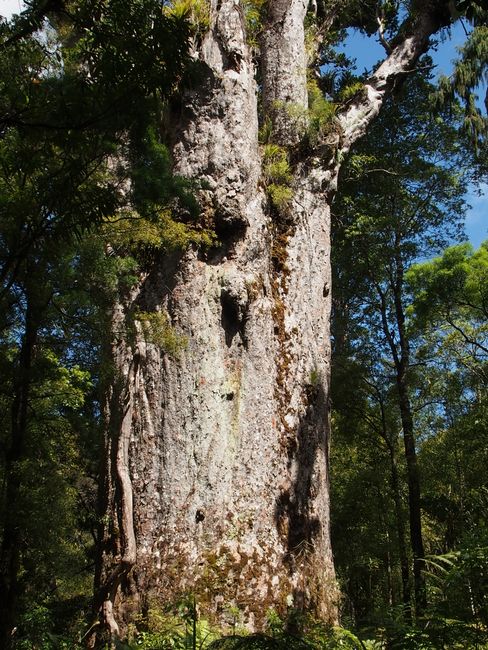
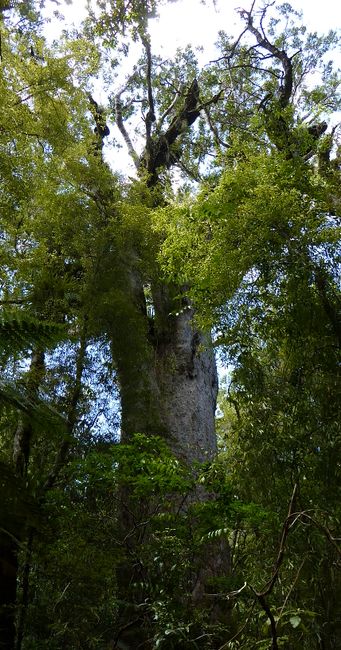
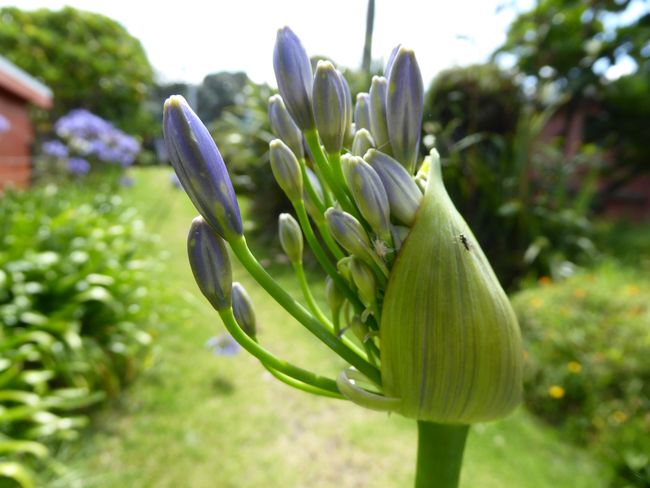
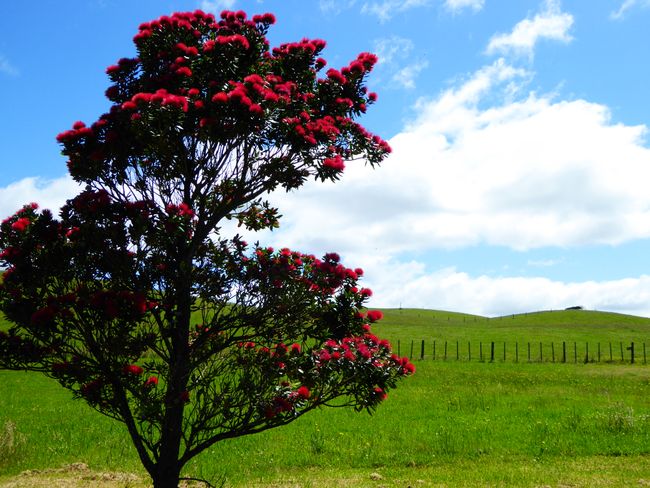
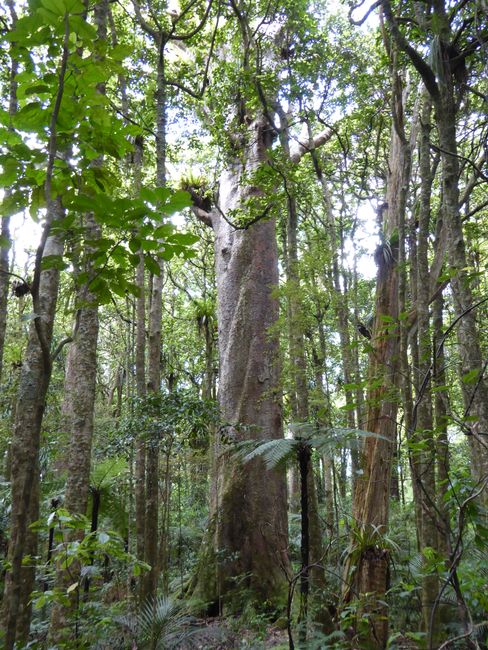
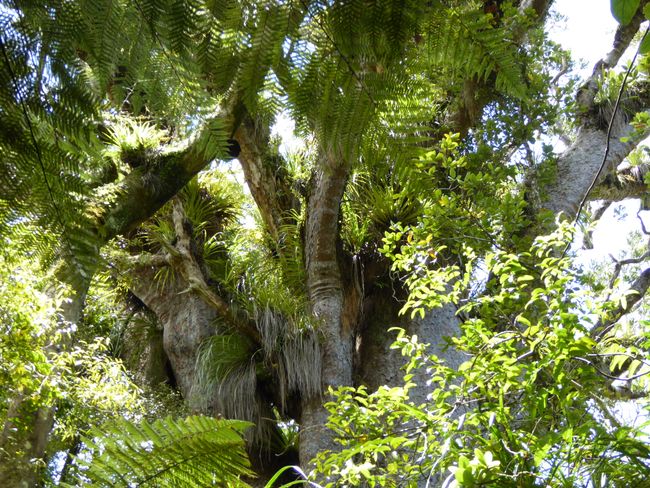
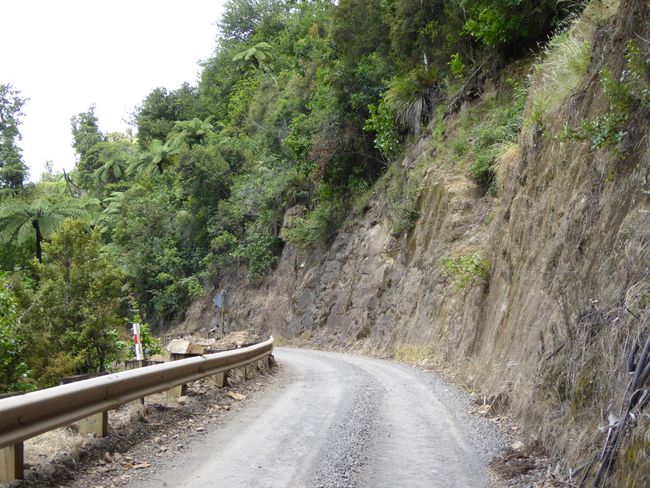
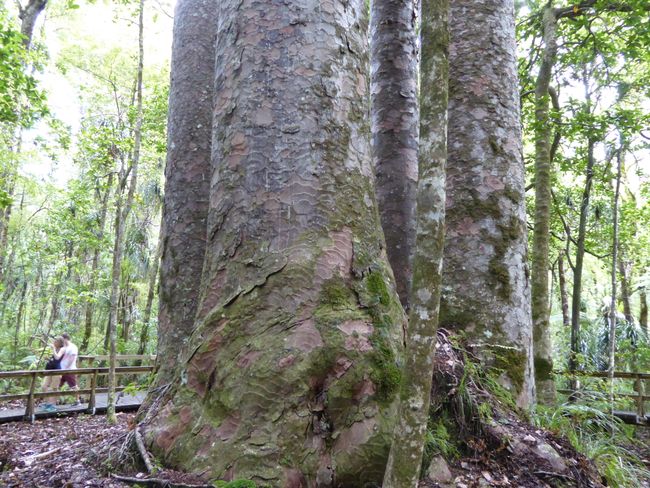
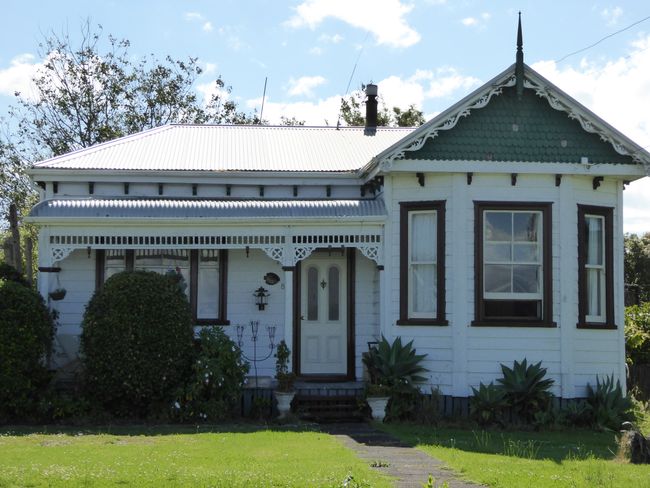
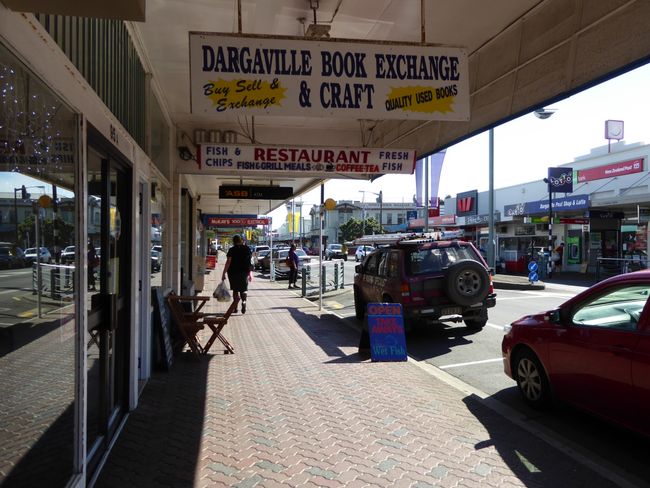
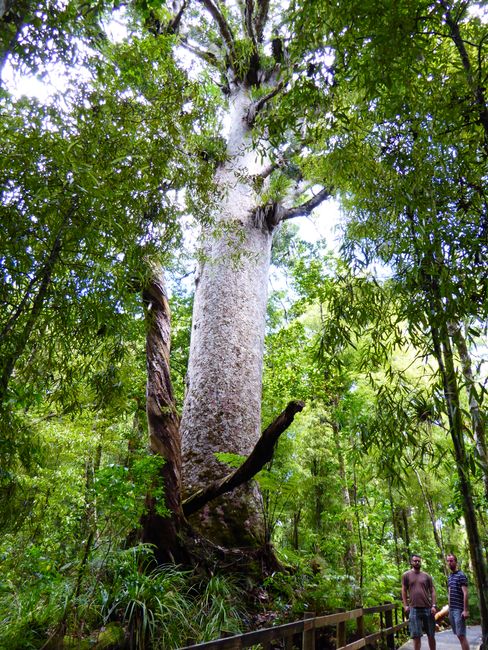
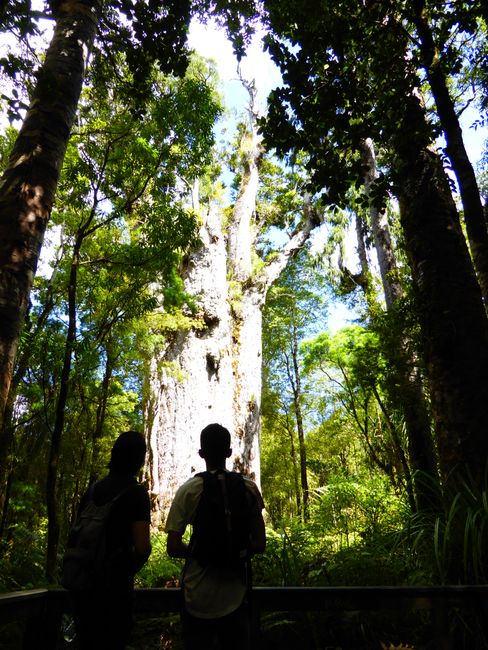
Yatiyäw qillqatar qillqt’asipxam
19th December 2014
I slept really well. Although with a few interruptions, jet lag is not really a problem. In the kitchen opposite my cabin, I can toast my English muffins on the toaster and have breakfast on the mini terrace of my cabin. The sun is shining from a clear blue sky and it's already too warm at 9:00 am. I have to wear a hat during breakfast.
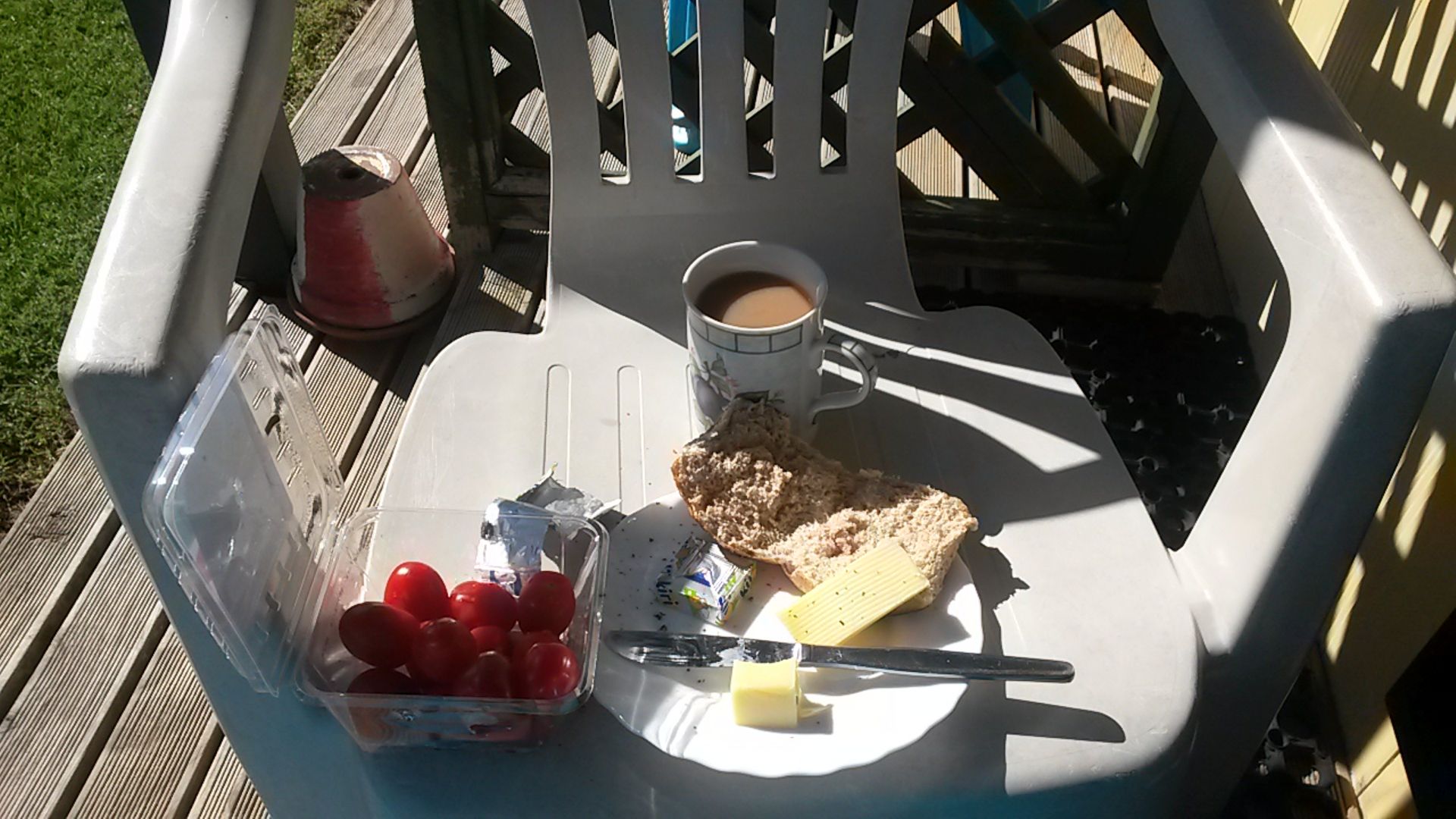
I wander down to the beach, which is gigantic and long. You can walk along the beach 30 km north to the Manunui Bluff and even further behind. There are also many kilometers of beach to the south. But there is no shade and next to the wide, firm beach are high dunes that look like rocks. You can see a few shells, cars drive around here sporadically, and after half an hour, I'm on my way back because my arms are already getting reddish, despite using SPF 30. Besides, with the length of the beach, there is not much variety to expect. You can see about 5 km in each direction.

I get in the car and decide to drive Highway 12 north to the Kauri Forests. The road is as always a country road with many curves and hills, on both sides of the road the land is green, hilly and often populated with cattle, less with sheep.
The Trounson Kauri Forest is a 450-hectare area in the midst of this agricultural land. They are making rigorous efforts here to preserve or restore nature in its most natural form. This also means that they ruthlessly tackle non-indigenous animals such as hedgehogs, possums, cats, weasels, ferrets, and even free-roaming dogs in order to protect kiwis and kauris. All of these non-indigenous beings have settled here perfectly because they found abundant food here. In particular, 4-legged creatures that can rely on a rich food supply since many indigenous animals live on the ground as they never had to fly or have lost this ability in the course of evolution. In addition, humans came with their influences and over the course of about 800 years, about half of all bird species were lost.

Approximately 40-60 kiwi couples live here in the Trounson Kauri Park. Since couples stay together for life, they can be identified pretty well. The female kiwi lays 2 eggs per year, but usually only 1 offspring survives. They are incubated by the male kiwi and after hatching, they are immediately on their own. They are not accompanied or fed by their parents, they have to be able to do that themselves right away. Kiwis are flightless birds, they have small wings but cannot fly. They live in burrows or hollow trees. They are the only birds that have nostrils at the front of their beak and can smell extremely well. They also have whiskers to find their way at night. They are only active at night, so you will never see them during the day. You can take night walks and they are guided through the forest with red flashlights, as kiwis cannot see red light. With their extremely long beaks, they dig deep into the ground to unearth worms and insects. They have muscular legs because they always dig in the front and then have to use their legs as a counterbalance when pulling their beak with food out of the ground using force. When kiwis originated, there were no dogs or possums in New Zealand. Today, dogs are responsible for 75% of all kiwi deaths and efforts are being made to train dogs in dog school not to hunt kiwis. However, this requires dog owners who consider this important and are willing to spend money on it... Possums and hedgehogs are also foreign animals responsible for large amounts of insect consumption, which the kiwis lack.
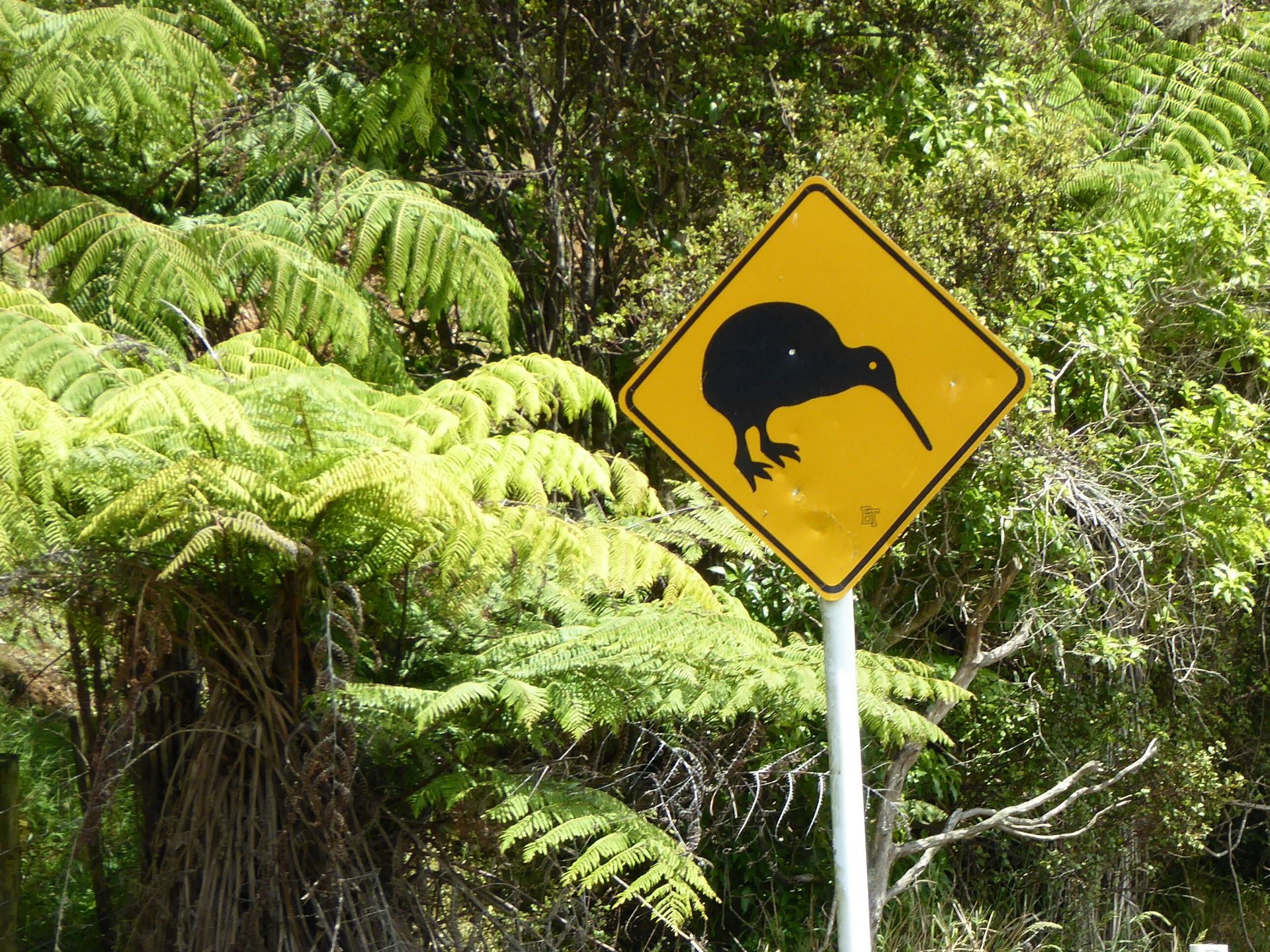
Kauris, the ancient tree giants, have a similar problem. On the one hand, they were ruthlessly deforested in the past because not only the long-fibered wood was valuable, but also the resin, the so-called kauri gum, which was usable for varnishes, etc. (less for jewelry, although it is similar to amber). Today there are only about 2,000 kauris left. Some of the trees are sacred to the Maoris, and many of the particularly old and large kauris have been given names by the Maoris. The trees have been threatened in recent years by a parasite that attacks the bark and is covered with festering sores. The parasite is similar to one from Korea that has infested some trees there. However, this has only been known since 2008 and solutions are still being sought.

Kauris are living beings that probably still look the same as they did before the last ice age. Fossil finds prove that kauris existed 200 million years ago. The glaciers of this ice age did not completely cover New Zealand, so the ancient kauri forests were able to survive into the present. If you want to visit a kauri forest today, you have to brush off the soles of your shoes and clean them with a solution, and you can only access the forest through a grate that is embedded in the ground. Don't mess up the forest floor with foreign germs.
The Trounson Kauri Park is easy to walk through. You follow a path and you are in the middle of the rainforest. Huge tree ferns as tall as trucks grow here, and of course, there are plenty of kauris in different varieties. I am completely alone here and was already surprised at the parking lot that there was only one camper van and one car. It is incredibly quiet, you only hear birds chirping. Unfortunately, I don't know them and rarely get to see them. 25% of all bird species and 90% of insects are endemic, as are 85% of all flowering plants. So at best, you can determine a kind of family relationship, but real plant names don't mean anything anyway. The diversity of tree ferns alone is incredible. There are already about 200 fern species here, of which the most famous is the silver fern, which is also a symbol of New Zealand. Or the mamaku, which grows up to 20m.
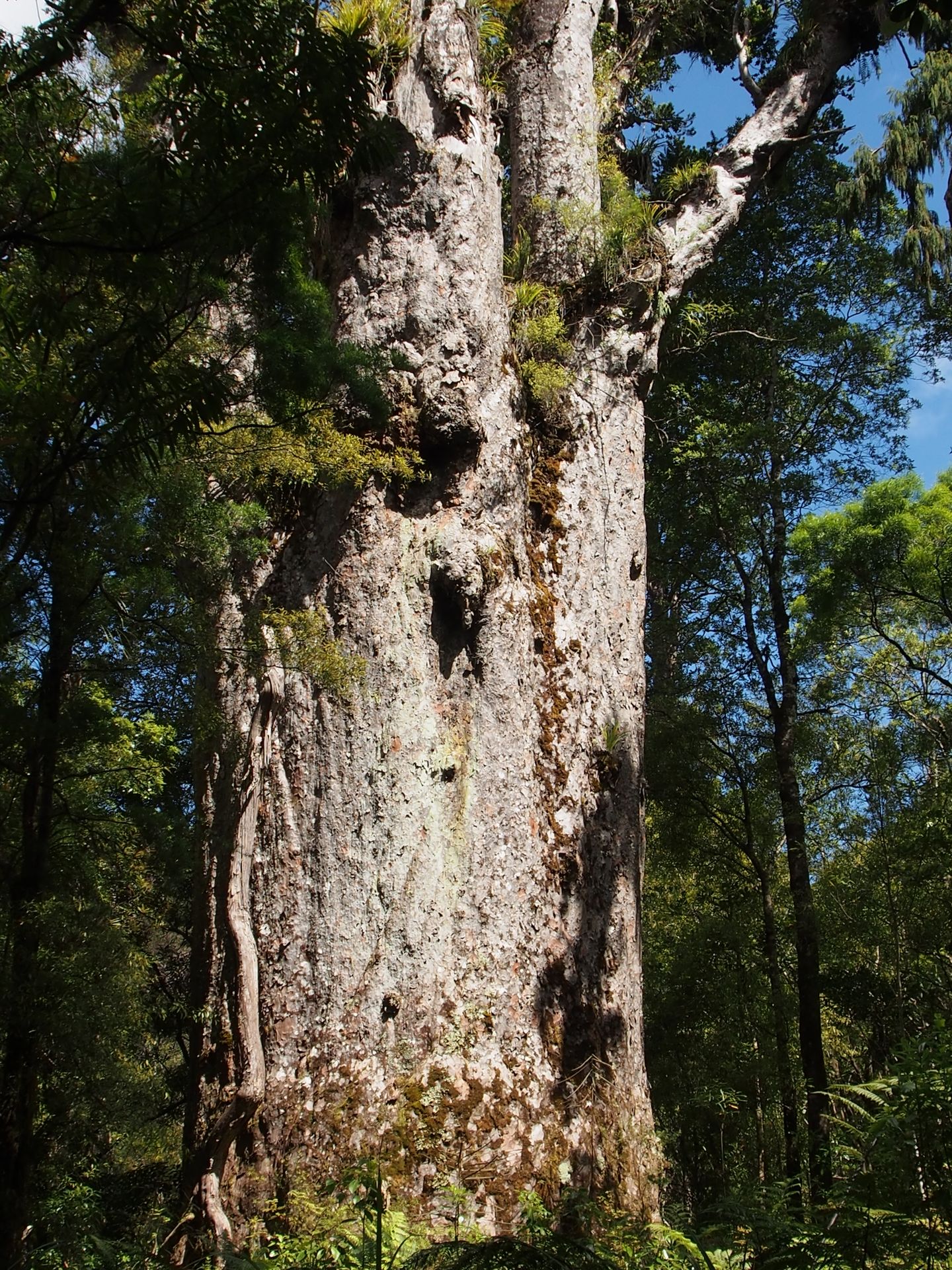
After 1.5 hours of amazement, I'm back in the car and continue north. The Waipoua Forest is my destination. It is the largest kauri forest in New Zealand. The New Zealand kauri is the largest and oldest of the Pacific kauri tree family. The Waipoua Forest stretches for 30 km on both sides of Hwy 12, which is also disgustingly curvy and hilly here. Driving is now difficult because you have to pay attention and I'm getting a bit tired in the afternoon, as usual. Although that's nothing like real jet lag.

I drive to the information center on a gravel road that reminds me of Alaska. When I arrive there, they say: Today we have a Christmas party and we're closing now. OK, so I continue. Because the second largest (not tallest) kauri stands about 10 km further north on Hwy 12.
I reach the parking lot near it at around 3:00 pm and walk through the forest and ferns again for another hour. There are many kauris here and the Four Sisters are an ensemble of 4 kauris that seem to come from one root, and the Te Matua Ngahere (Father of the Forest) is the second largest kauri in New Zealand when you consider the mass. You can see the size with people in the foreground. This kauri is about 2,000 years old, has a trunk circumference of 16.5m, and is about 30m tall.

Four Sisters
In the Waipoua Forest, you can also unfortunately see several kauri skeletons standing white next to the still healthy brothers.
I leave this point at 4:00 pm and drive about 80 km south to get to Dargaville, the next town near my campsite. I arrive there at 5:00 pm and walk along the two main streets for a bit. Most stores have just closed and I'm glad to get the last coffee at a bakery and sit in the sun for a moment and enjoy my 'flat white'.
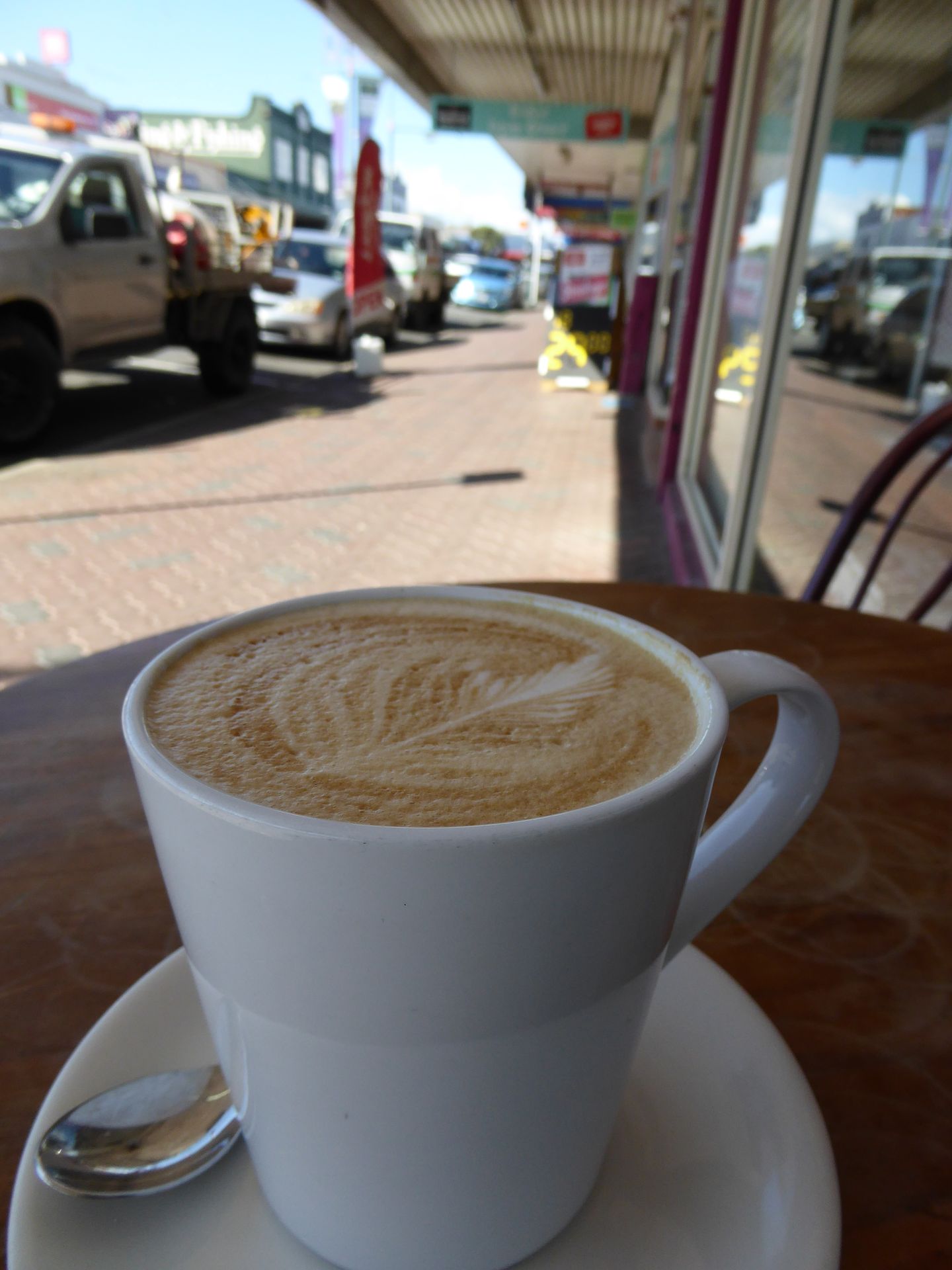
Not far from the main road, I sit in the sun for a while and look at the Wairoa River. Then I decide against a restaurant after getting the impression that here everything is either take-away or poor quality because it smells everywhere like frying fat - and drive to the supermarket. Yes, Dargaville has a supermarket! It's so new that not all of the parking lot markings are there yet. But I get myself a salad, dressing, and a few rolls and sit in front of my cabin at 7:30 pm and eat. I haven't had anything since this morning and I'm really hungry. Now there are a few Germans to be found. It's really amazing how many Germans there are here. And Swiss people too.
In my cabin, I rearrange my bag sensibly and then sit on my mini-terrace and write in my journal. While yesterday it got incredibly cold very quickly and this morning all the car windows were fogged up, today you can sit outside comfortably and ventilate the cabin. Hopefully, I won't have 100 mosquitoes in my cabin now.
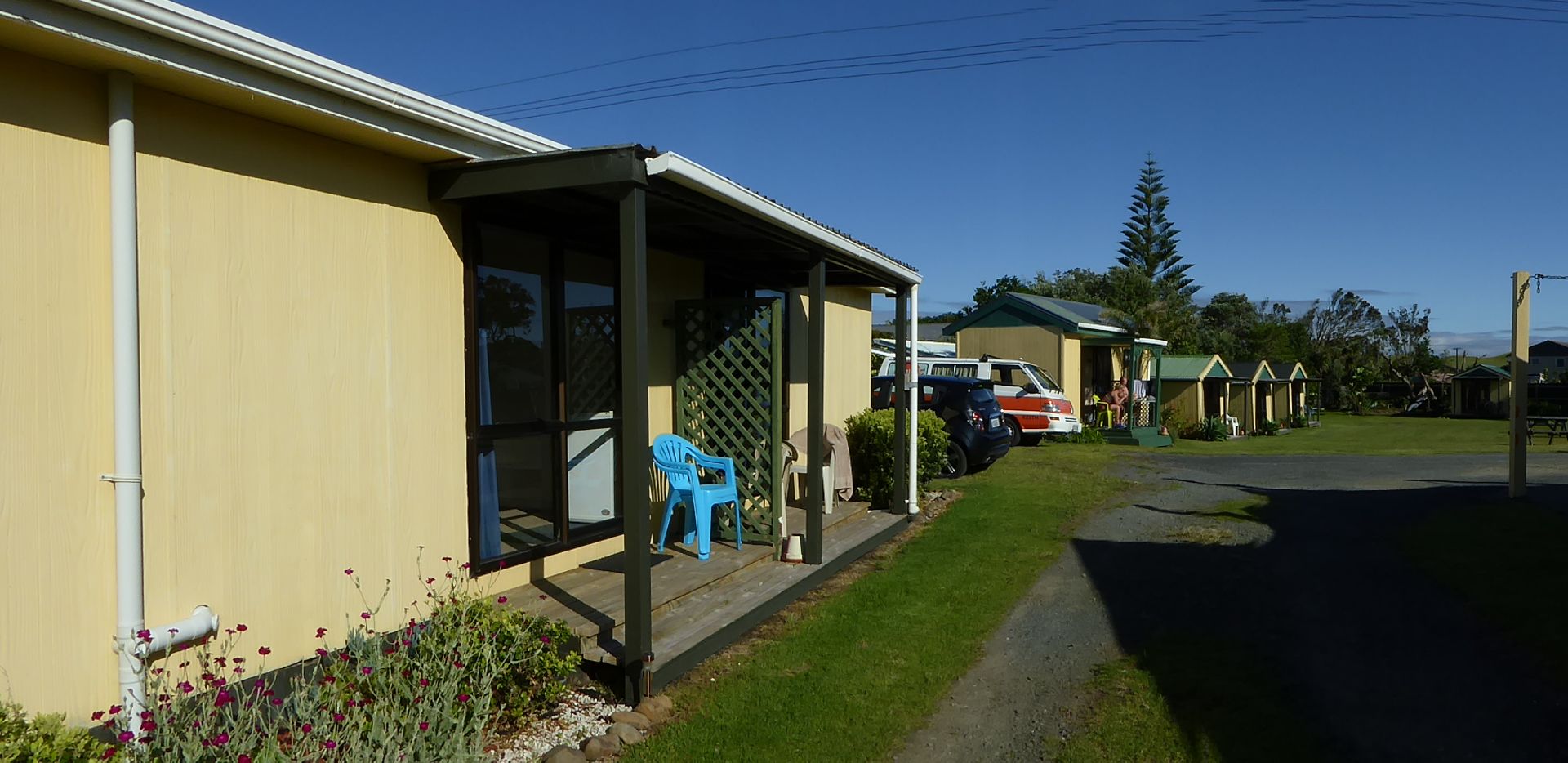
I'm in bed at midnight.
Daily mileage: 160 km
Yatiyäw qillqatar qillqt’asipxam
Jaysawi

Viajes ukan yatiyawinakapa Nueva Zelanda markanxa
